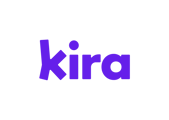Set classroom structures to support students in their independent learning journey on the Kira Platform.
Independent Learning with Kira
With the robust video resources and AI tools available on the Kira platform, some teachers may prefer for their students to have an asynchronous, independent study experience in their course work. In this model, students will work through the course at their own pace, watching videos completely or predominantly on their own. The teacher, rather than leading lessons, acts as a facilitator of independent learning. The teacher may wish to utilize content locking or course progression options to stop students from progressing too far or to ensure they complete steps sequentially.
Recommendations for Independent Learning
While the Kira platform has many methods of support for students, we know that many students on the Kira platform are still at an age where they are developing their executive functioning and self regulation skills. To ensure that students are able to stay focused and engaged on their independent classwork, we recommend considering the following:
- Utilize timelines and learning plans to keep students on track.
- Students may have different goals of what to finish in a day or week, but can have classroom goals like ‘Finish Unit 1 by October 2nd’
- Content locking can still assist in an independent model
- Keep students “more together” by setting locks that open as deadlines are met, or set locks for individual students
- Utilize sponge activities or content design wizard to keep fast movers busy and practicing
- Pulse check with AI TA and one-on-one student conferencing
- Set a conferencing schedule and stick to it - aim to talk to each student at least once a week.
- Utilize AI TA to triage sudden issues and look for patterns when conferencing
Independent Learning Example Instruction
Ongoing Structures
Based on the above recommendations, it's suggested for an independent study classroom to have several structures that will be ongoing for the school term.
- Class deadlines and/or student learning plans: Set on a routine cadence for when they begin, end, and have any checkpoints or milestones
- Teacher conferencing schedule
- Whole class touch points: allow times to build community at start and end of class
Example Flow of Day
- Students complete content agnostic do now activity with whole class then log in to Kira
- Think reflection, logic puzzle, or something else that will use their computational thinking skills
- Students begin working in the course, using class deadlines or learning plan to set pace
- Teacher moves through conference schedule, spending ~5 minutes per student.
- Time to check in with progress, answer questions, suggest remediation/review/extension using AI Teaching Assistant
- Reference learning plan to ensure student is on pace, discuss next steps if pacing is off
- Ensure students are prepared for their share during lesson close
- Lesson Close: class regroups and students who were conferenced with share something they are struggling with and something they’ve found success with.
- Promote class discussion with sharers describing strategies that allowed them to be successful and soliciting help for sticking points.
A Note for Fast Workers
Even with an independent study, you may have students who finish well ahead of their learning plan deadlines and get bored not being able to move on, or feeling like they're far ahead and don't need to work. Normalizing sponge activities - or supplementary activities students complete to soak up extra time when they finish - can help with classroom engagement and management.
- Typing skills - your school or district may have a preferred platform for this, but many free ones exist.
- Extra Coding Practice - utilize our Standalone Code Editor and give students extra challenges!
- You can utilize our Kira Content Design Wizard to help with this.
- Consider making a batch of activities for an entire Unit; you can label them as mild, medium, spicy, or by the skills they should know to attempt them.
- Weekly Error Assessment - ask students to submit their favorite error (flawed code) or write a coding challenge. At the end of the week, work 1-2 of these into an end of week error assessment task.
